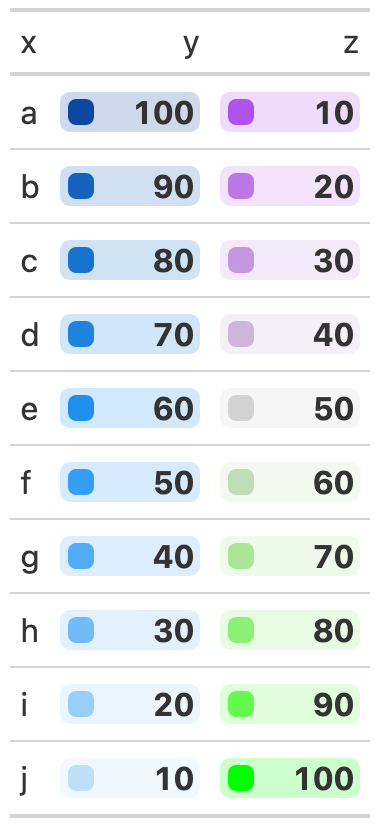Create PFF-style colorboxes in a gt table.
Note that rather than using gt::fmt_ functions on this column, you can send
numeric formatting arguments via .... All arguments should be named
and are passed to scales::label_number().
Usage
gt_color_box(
gt_object,
columns,
palette = NULL,
...,
domain = NULL,
width = 70,
font_weight = "bold"
)Arguments
- gt_object
An existing gt table object of class
gt_tbl- columns
The columns wherein changes to cell data colors should occur.
- palette
The colours or colour function that values will be mapped to. Can be a character vector (eg
c("white", "red")or hex colors) or a named palette from the{paletteer}package in thepackage::palette_namestructure. Note that'pff'will fill in a blue -> green -> yellow -> orange -> red palette.- ...
Additional arguments passed to
scales::label_number(), primarily used to format the numbers inside the color box- domain
The possible values that can be mapped. This should be a simple numeric range (e.g.
c(0, 100))- width
The width of the entire coloring area in pixels.
- font_weight
A string indicating the font weight, defaults to
"bold", change to"normal"for default weight.
Examples
library(gt)
test_data <- dplyr::tibble(x = letters[1:10],
y = seq(100, 10, by = -10),
z = seq(10, 100, by = 10))
color_box_tab <- test_data %>%
gt() %>%
gt_color_box(columns = y, domain = 0:100, palette = "ggsci::blue_material") %>%
gt_color_box(columns = z, domain = 0:100,
palette = c("purple", "lightgrey", "green"))See also
Other Colors:
gt_color_rows(),
gt_hulk_col_numeric()

